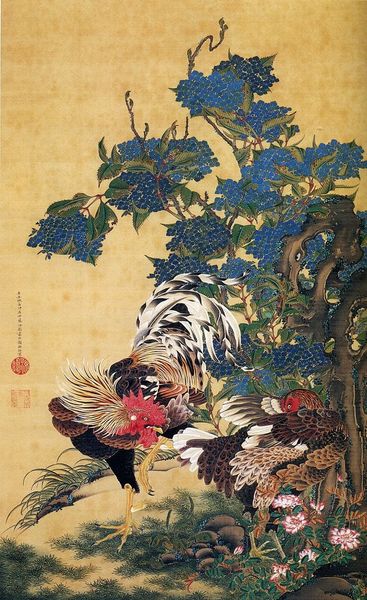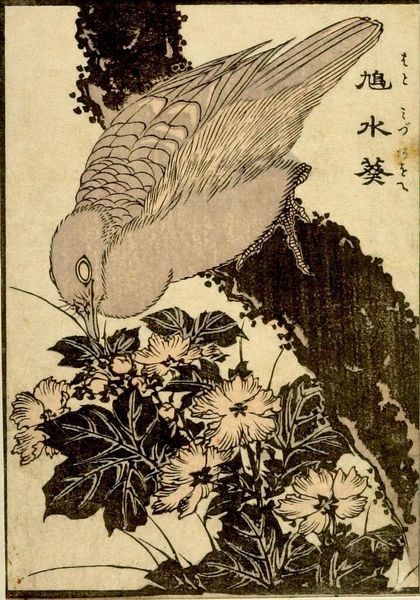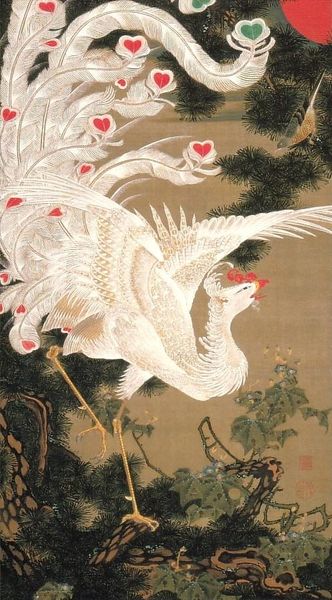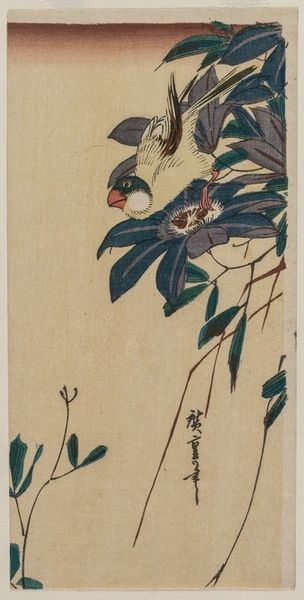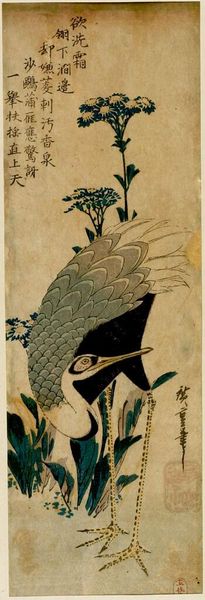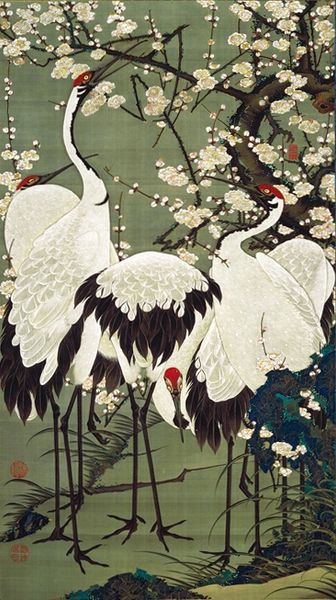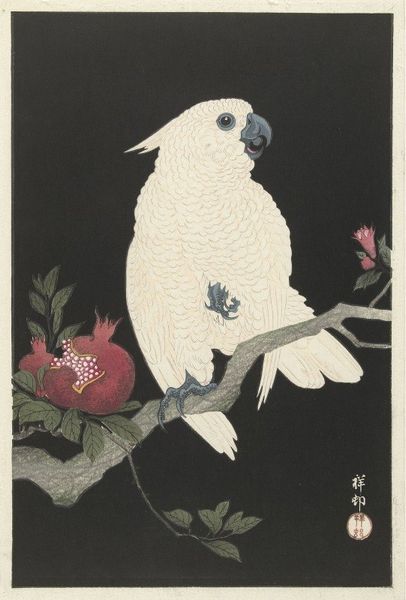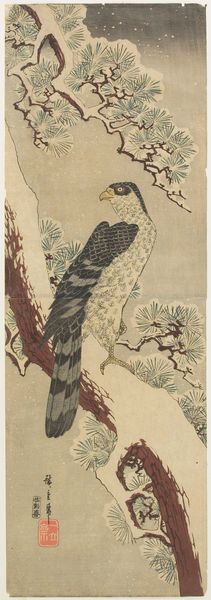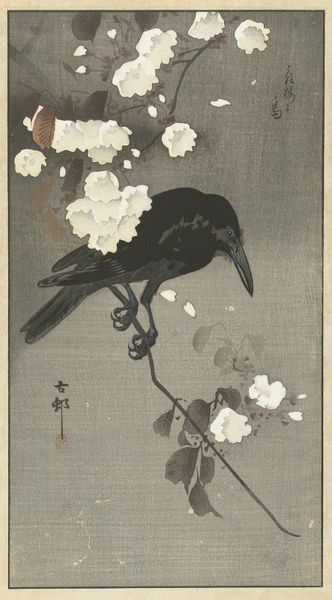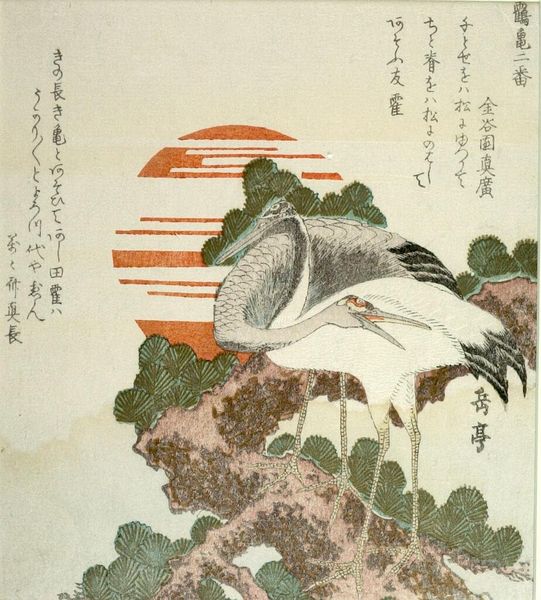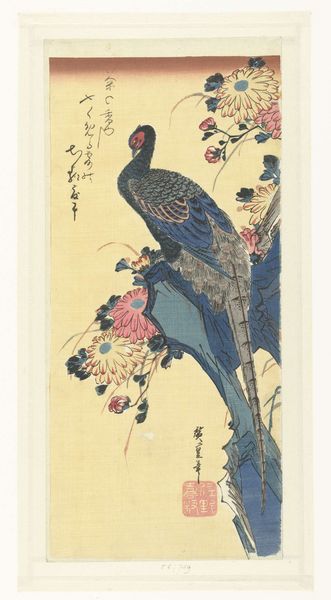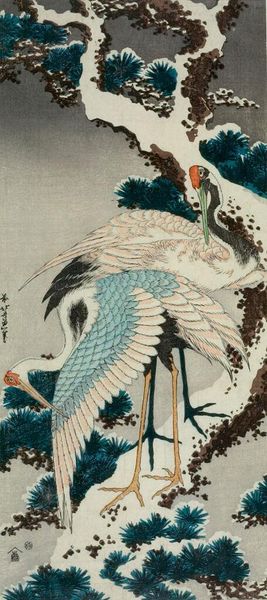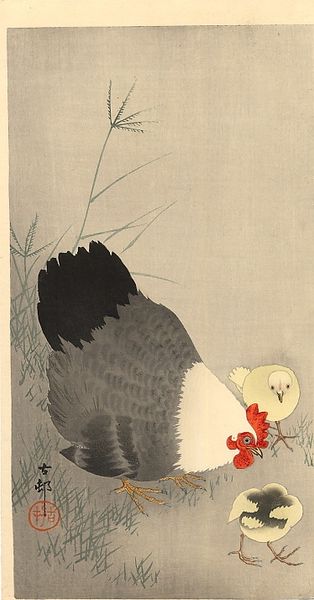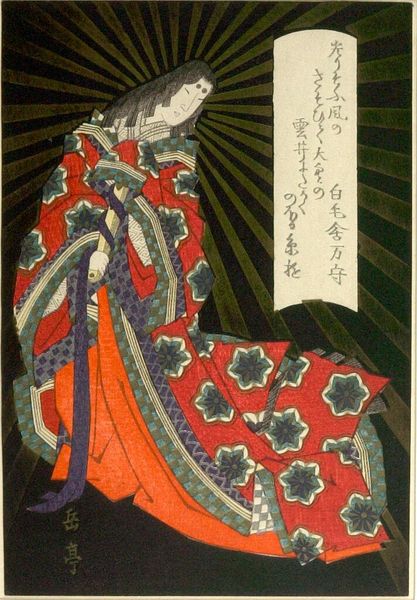
painting
#
painting
#
asian-art
#
figuration
#
realism
Copyright: Public domain
Ito Jakuchu created Fuyo soukeizu in eighteenth-century Japan using ink and color on silk. Jakuchu was fascinated by the natural world, a common theme in the Edo period. But he was also deeply interested in the materiality of painting, a key aspect of his artistic identity. The silk provides a smooth, absorbent ground for the mineral pigments, which Jakuchu applied with great precision. Take a closer look and you'll notice the intricate details of the rooster's feathers and the delicate rendering of the morning glory vines. Jakuchu had explored realism with the help of live models, alongside the canon of Chinese painting manuals. It took painstaking labor to build up these surfaces, which can be appreciated both for their artistry and for the incredible concentration of labor they embody. By carefully observing and depicting his subjects, Jakuchu elevated them, blurring the boundaries between the natural world, artistic representation, and the social context of artistic production.
Comments
No comments
Be the first to comment and join the conversation on the ultimate creative platform.
